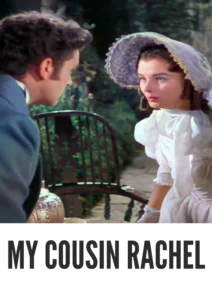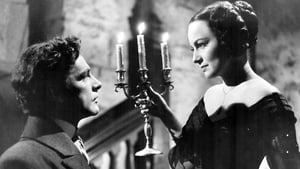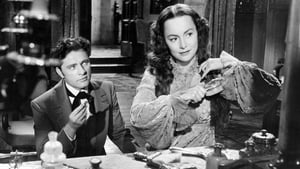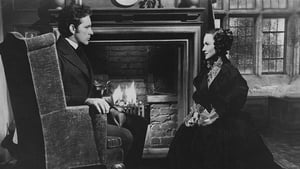Contact: info@alwanfilm.com
Video Sources 0 Views

Synopsis
My Cousin Rachel 1952 Colorized Review: A Gothic Romance in Technicolor

Introduction
Few films of the early 1950s captured the essence of Gothic romance and mystery as deftly as My Cousin Rachel (1952). Directed by Henry Koster and based on Daphne du Maurier’s celebrated novel of the same name, this film weaves a suspenseful tale of love, jealousy, and deceit against the dramatic backdrop of the English countryside. Starring the enigmatic Olivia de Havilland and a young Richard Burton, My Cousin Rachel quickly gained acclaim for its atmospheric storytelling and complex character dynamics. While it was originally released in black-and-white, the colorized version of the film provides a fresh perspective on this classic, offering new visual depth to its brooding, gothic ambiance. In this review, we will explore the significance of My Cousin Rachel (1952), delve into the nuances of its colorized format, and discuss its lasting impact on the Gothic romance genre.
Check The Full Colorized Movies List
Check Our Colorized Movies Trailer Channel
Understanding My Cousin Rachel 1952 Colorized: Director, Cast, and Genre
Director’s Vision
Henry Koster, a director known for his ability to craft emotionally engaging narratives, brings a nuanced and deliberate approach to My Cousin Rachel. Koster’s vision for the film was to remain faithful to du Maurier’s novel while emphasizing the psychological tension that runs throughout the story. His direction carefully balances the elements of romance and suspense, creating an atmosphere of uncertainty that keeps audiences guessing about the true intentions of the titular character, Rachel. Koster’s subtle approach to storytelling allows the tension to build gradually, resulting in a film that lingers in the viewer’s mind long after the credits roll.
The Iconic Performance of Actors
The film’s cast is headlined by Olivia de Havilland, who portrays the mysterious and captivating Rachel Ashley. De Havilland’s performance is both alluring and ambiguous, perfectly capturing Rachel’s duality as both a potential villainess and a misunderstood woman. Her portrayal leaves viewers torn between sympathy for her plight and suspicion of her motives. De Havilland’s mastery of the character’s complexities is one of the film’s greatest strengths.
Opposite de Havilland is Richard Burton, who plays Philip Ashley, a young and impressionable man who becomes increasingly obsessed with Rachel. Burton’s portrayal of Philip is intense and passionate, reflecting the character’s internal struggle between love, anger, and doubt. This role was a breakthrough for Burton, earning him his first Academy Award nomination and establishing him as a rising star in Hollywood.
Exploring the Genre
My Cousin Rachel (1952) is a quintessential example of Gothic romance, a genre characterized by dark, brooding settings, intense emotions, and an overarching sense of mystery. The film is steeped in Gothic elements, from the atmospheric Cornish manor where much of the story unfolds to the themes of love, betrayal, and moral ambiguity that drive the plot. While the film adheres to the conventions of the Gothic genre, it also elevates them through the strength of its performances and the sophistication of its narrative.
Exploring the World of My Cousin Rachel 1952 Colorized: Plot and Characters
Detailed Synopsis
My Cousin Rachel opens with Philip Ashley (Richard Burton), an orphan raised by his wealthy cousin Ambrose in a grand estate in Cornwall. Ambrose, a bachelor, travels to Italy for health reasons, where he meets and marries a distant relative, Rachel (Olivia de Havilland). Soon after, Ambrose’s letters to Philip become increasingly erratic, expressing concerns that Rachel is mistreating him. Philip, alarmed by these letters, travels to Italy only to find that Ambrose has died under mysterious circumstances. Rachel has left for England, and Philip, convinced of her guilt, vows revenge.
However, when Rachel arrives at the estate, Philip’s resolve begins to waver. Rachel’s charm and beauty quickly disarm him, and instead of carrying out his plan of retribution, he becomes infatuated with her. As their relationship deepens, Philip struggles with conflicting emotions—he is drawn to Rachel, yet haunted by the possibility that she may have been responsible for Ambrose’s death. The film masterfully builds tension as Philip’s obsession with Rachel grows, leading to a dramatic and tragic conclusion that leaves the viewer questioning Rachel’s true intentions.
The Complex Protagonist and Memorable Supporting Characters
Philip Ashley is a fascinating protagonist, torn between his youthful naivety and the dark realities he begins to confront. His emotional journey is central to the film’s narrative, as he transforms from a confident and somewhat arrogant young man into someone utterly undone by his own suspicions and desires. Burton’s portrayal of this inner conflict is gripping and showcases his potential as a leading actor.
Rachel, as portrayed by Olivia de Havilland, is equally complex. She is presented as both an object of desire and a source of fear, embodying the film’s central theme of ambiguity. Is she a victim, misunderstood and wrongly accused, or is she a cunning and dangerous woman capable of manipulation and murder? The supporting characters, such as Philip’s guardian, Mr. Kendall (played by Ronald Squire), and his daughter, Louise (Audrey Dalton), add further depth to the plot, each representing different facets of Philip’s world and complicating his relationship with Rachel.
The Art of Film Colorization
Understanding the Process
Film colorization is a delicate art, particularly when dealing with films like My Cousin Rachel (1952), which rely heavily on atmosphere and mood. The process of colorization involves adding color to black-and-white footage, either manually or digitally, and it requires an understanding of how color can affect a film’s tone. In the case of My Cousin Rachel, the colorization process needed to respect the film’s Gothic sensibilities while enhancing its visual appeal for modern audiences.
The original black-and-white cinematography, by Joseph LaShelle, plays a crucial role in setting the film’s mood. His use of shadows and lighting creates a sense of foreboding, and any attempt to colorize the film must carefully preserve these visual cues. Fortunately, advancements in colorization technology have allowed for a more nuanced and sophisticated approach, ensuring that the film’s haunting atmosphere remains intact in the colorized version.
Development Over Time
Colorization has come a long way since its early days. The technology used to colorize films like My Cousin Rachel (1952) is far more advanced than the primitive techniques used in the 1980s, which often resulted in flat, unrealistic colors. Today’s digital colorization tools allow for greater control and precision, ensuring that the colors added to the film enhance the original aesthetic rather than detract from it.
Early Colored Films: A Brief History
Emergence of Early Colored Techniques
The history of film colorization is closely tied to the broader development of color in cinema. Before the advent of full-color films, filmmakers experimented with various techniques to add color to their work, including hand-tinting, toning, and stenciling. These early methods were labor-intensive and often resulted in inconsistent results, but they represented the first steps toward the fully colorized films we see today.
Technicolor, introduced in the 1920s and perfected in the 1930s, was the first major breakthrough in color filmmaking. By the time My Cousin Rachel was released in 1952, Technicolor had become the standard for color films, although many filmmakers still chose to shoot in black and white for artistic reasons. The decision to colorize My Cousin Rachel decades after its release is part of a broader trend of revisiting classic films and reimagining them for contemporary audiences.
My Cousin Rachel 1952 and Its Early Colored Version
The Decision to Release in Color
The decision to release a colorized version of My Cousin Rachel was driven by a desire to introduce the film to new audiences while enhancing its visual appeal. Gothic films, with their dramatic settings and emotional intensity, often benefit from the use of color, as it can heighten the mood and draw attention to key visual details. The colorized version of My Cousin Rachel brings out the lushness of the English countryside, the rich textures of the costumes, and the subtle shifts in tone that mirror the film’s emotional landscape.
Impact on the Visual Narrative
Colorization adds a new layer of complexity to My Cousin Rachel, offering viewers a fresh way to experience the film. In the black-and-white version, much of the film’s tension is conveyed through shadows and contrasts, creating a stark, dramatic atmosphere. The colorized version softens some of these contrasts but compensates by adding richness and depth to the visual narrative. The interplay of light and color enhances the film’s Gothic elements, drawing attention to the dark, foreboding nature of Rachel’s presence while also highlighting the beauty of the world she inhabits.
The Debate Over Film Colorization
Controversy Surrounding Colorization
As with many classic films, the decision to colorize My Cousin Rachel sparked a debate among cinephiles and film historians. Critics of colorization argue that altering a film’s original visual style compromises the artistic integrity of the work, particularly when the director and cinematographer made deliberate choices to shoot in black and white. They contend that colorization can diminish the impact of a film’s mood and atmosphere, especially in genres like Gothic romance, where the interplay of light and shadow is crucial.
On the other hand, proponents of colorization argue that it can bring new life to older films, making them more accessible and visually appealing to modern audiences. They point out that colorized versions of films are not meant to replace the originals but to offer an alternative viewing experience that can attract new viewers and help preserve classic films for future generations.
Examining My Cousin Rachel 1952 as an Early Colored Film
Enhancement or Distraction?
The colorization of My Cousin Rachel has been met with mixed reactions. Some viewers appreciate the added visual richness, noting that the color brings out details that may have been overlooked in the black-and-white version. The colorized version emphasizes the beauty of the film’s settings and costumes, making the world of My Cousin Rachel feel more vibrant and immersive.
However, others argue that the colorization detracts from the film’s Gothic atmosphere. The stark contrasts and dramatic lighting of the black-and-white version are integral to the film’s tone, and some feel that the colorized version softens the film’s darker elements, reducing its impact.
Influence and Legacy: My Cousin Rachel 1952 Colorized’s Impact on Cinema
Gothic Romance and Psychological Thrillers
My Cousin Rachel (1952) played a significant role in shaping the Gothic romance and psychological thriller genres. Its themes of obsession, jealousy, and the ambiguity of human motives have influenced many films that followed. Directors like Alfred Hitchcock, who was also a fan of du Maurier’s work, drew inspiration from the film’s ability to blend romance with suspense, creating complex, morally ambiguous characters.
The film also paved the way for later adaptations of du Maurier’s novels, including Rebecca and The Birds, both of which further explored the themes of love, deception, and psychological manipulation. My Cousin Rachel remains a touchstone for filmmakers looking to capture the intensity and mystery of Gothic storytelling.
Director’s Cinematic Legacy: Beyond My Cousin Rachel 1952 Colorized
Henry Koster’s Influence
Henry Koster’s work on My Cousin Rachel is a testament to his skill as a director capable of balancing emotional depth with visual storytelling. Although Koster is perhaps best known for his lighter films, such as Harvey (1950) and The Bishop’s Wife (1947), My Cousin Rachel showcases his ability to handle darker, more complex material. His direction in this film highlights the psychological tension between characters, making it a standout in his filmography.
Koster’s influence can be seen in later directors who tackled similar themes of psychological tension and ambiguity, particularly in the Gothic and thriller genres. His careful attention to character development and mood has made My Cousin Rachel a lasting example of how to adapt challenging literary works for the screen.
Themes Explored in My Cousin Rachel 1952 Colorized
Darkness, Morality, and Obsession
The themes of My Cousin Rachel revolve around the darkness of human emotions, particularly the fine line between love and obsession. The film delves into the dangers of unchecked passion, as Philip’s growing infatuation with Rachel blinds him to the possibility that she may not be the innocent victim he wants to believe she is. The question of Rachel’s guilt or innocence is never fully resolved, adding to the film’s sense of moral ambiguity.
The theme of control—whether over others or one’s own emotions—also runs through the film. Philip’s inability to control his feelings for Rachel leads to his eventual downfall, while Rachel’s own motivations remain shrouded in mystery, suggesting that she may have more control over the situation than she lets on.
Reception and Controversy Surrounding My Cousin Rachel 1952 Colorized
Initial Reviews and Critical Reception
Upon its release in 1952, My Cousin Rachel received praise for its performances, particularly Olivia de Havilland’s portrayal of the enigmatic Rachel and Richard Burton’s intense turn as Philip. Critics lauded the film’s ability to maintain suspense and its faithfulness to du Maurier’s novel. The film was a commercial success and earned several award nominations, including an Academy Award nomination for Richard Burton.
The controversy surrounding the film’s later colorization, however, sparked debate among critics and fans alike. While some appreciated the fresh perspective the colorized version offered, others felt that it detracted from the film’s original Gothic aesthetic. Despite this, both versions of the film continue to be appreciated for their storytelling and performances.
Where to Watch My Cousin Rachel 1952 Colorized Online
For those interested in experiencing My Cousin Rachel (1952), the film is available for streaming on various platforms, including Amazon Prime Video and Criterion Channel, where both the black-and-white original and the colorized version can be found. Additionally, physical copies of the film are available on DVD and Blu-ray, offering viewers the chance to enjoy this Gothic classic in their preferred format.
FAQs About My Cousin Rachel 1952 Colorized
Q: Is My Cousin Rachel (1952) based on a book?
A: Yes, the film is based on the 1951 novel of the same name by Daphne du Maurier.
Q: Who stars in My Cousin Rachel?
A: The film stars Olivia de Havilland as Rachel Ashley and Richard Burton as Philip Ashley.
Q: What is the film’s genre?
A: My Cousin Rachel (1952) is a Gothic romance with elements of mystery and psychological suspense.
Q: What themes does My Cousin Rachel explore?
A: The film explores themes of obsession, love, betrayal, and moral ambiguity, as well as the dangers of unchecked passion.
Q: Where can I watch My Cousin Rachel (1952)?
A: The film is available on streaming platforms like Amazon Prime Video and Criterion Channel, as well as on DVD and Blu-ray.
Conclusion
My Cousin Rachel (1952) is a masterful blend of Gothic romance, psychological suspense, and moral ambiguity. Under Henry Koster’s direction, the film brings Daphne du Maurier’s novel to life with captivating performances from Olivia de Havilland and Richard Burton. The colorized version of the film offers a fresh perspective, though the original black-and-white version remains a testament to the power of atmosphere and visual storytelling. Whether viewed in color or in its original format, My Cousin Rachel continues to captivate audiences with its intricate plot, complex characters, and timeless themes of love, betrayal, and obsession.













